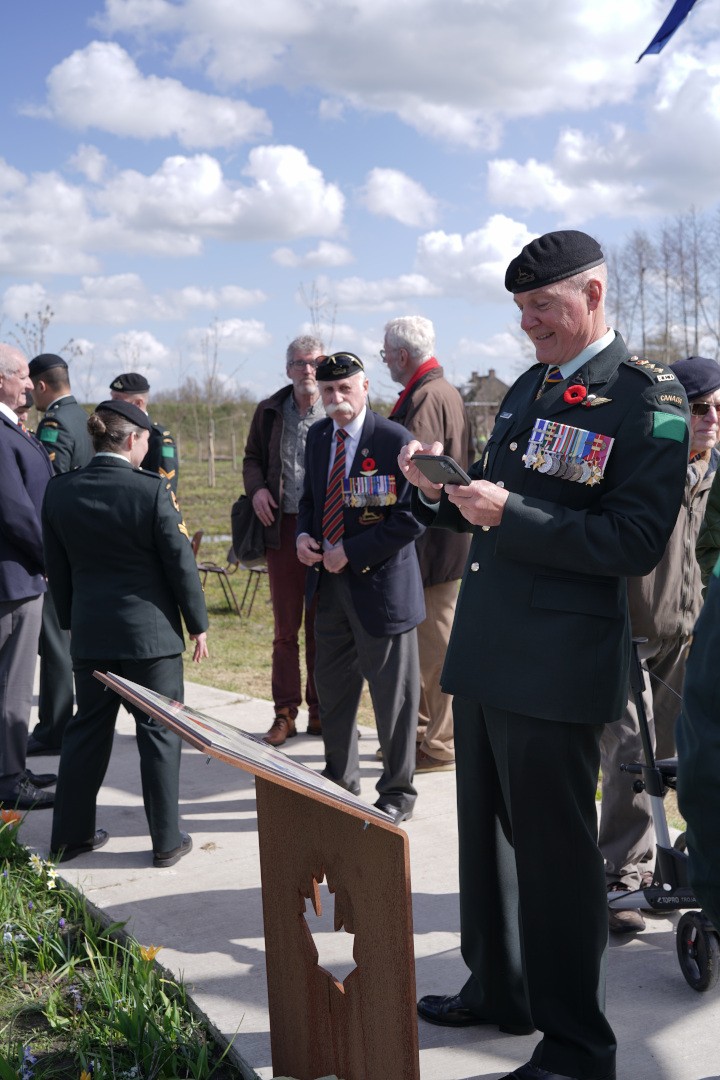Along the park's footpath, panels have been placed with concise information about important events in the world, the Netherlands and Smallingerland for each year of the war. There is also a panel dedicated to the Canadian liberators. Each panel has a QR code linked to the Smelne's Erfskip website. The aim is to encourage educational use by primary and secondary schools and to keep the tragic events of the Second World War in the spotlight for future generations.
The curvature of the walkway, which begins in a forest of cherry trees, hides the end from view. This symbolises the dark years of war and the uncertain future. At the end of the path, the open space reveals itself and a view of liberation, the future, emerges. The 90 cherry trees symbolise the people who fought for liberation, the straight trunks as warriors, standing upright against the occupier, and the crowns as their protectors, the people who provided them with shelter and sustenance.
The dome-shaped mound that has been created is the source around which the community gathers in such a way that everyone's gaze is directed towards each other. The artwork behind the moun, designed by Margôt Ritman, symbolises human emotions during the war.
The park's design features characteristic elements of the Frisian forest landscape, such as the artificial mound. The Freedom Park is part of the green zone surrounding the Vrijburgh neighbourhood.
